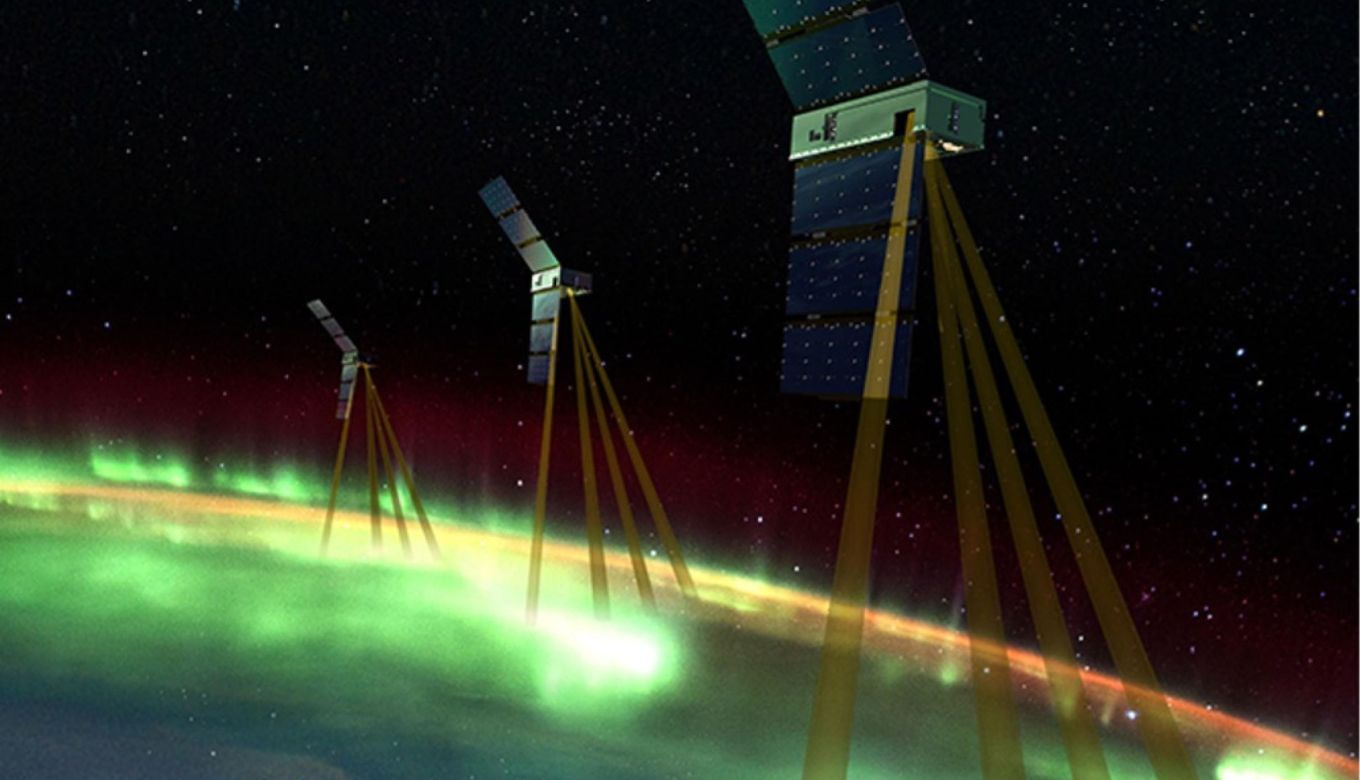NASA’s EZIE mission recently passed the review panel test and now is ready for launch the next year. This mission will study the aurora electrojets that link the Earth’s aurora to the planet’s magnetosphere.
NASA’s Electrojet Zeeman Imaging Explorer (EZIE) on 23rd March passed one of the critical reviews, It’ll also have to pass other review tests in the near future, to demonstrate to the panel team that the mission is on track and ready for the launch on the next year.
Mission update!
On March 23, 2023, our Electrojet Zeeman Imaging Explorer (EZIE) mission successfully passed its critical design review, marking a major milestone for the project and keeping it on pace for a scheduled launch next year! 🚀
Learn more: https://t.co/oXugfb1rEe pic.twitter.com/cqng3SMWBm
— NASA Sun & Space (@NASASun) April 10, 2023
This mission will provide us with the never before seen image of the auroral electrical jets.
What is NASA’s EZIE Mission?

NASA’s Electrojet Zeeman Imaging Explorer (EZIE) will study the aurora electrojets on the earth’s ionosphere altitude of around 65 miles (105 kilometers). These aurora electrojets study the link between the aurora and Earth’s magnetospheres.
Scientists will observe and configure the auroral electrojets and understand the interaction between the sun and the Earth.
NASA’s EZIE mission will be led by APL and it’ll send a trio of 6U CubeSats to the earth’s ionosphere. EZIE will remotely measure the auroral electrojets from an orbit of roughly 200-390 miles above the earth’s pole for 18 months, collecting magnetic field information with an innovative imaging technique.
The spacecraft will change its position, helping scientists characterize how the electrojets evolve every 2-20 minutes.
Ezie spacecraft will carry an instrument called Microwave Electrojet Magnetogram (MEM) built by NASA’s Jet Propulsion Laboratory (JPL).
MEM will capture the images of both Earth’s magnetic field and the one generated by the auroral electrojets. MEM works on the principle of Zeeman splitting – the separation of spectral lines of light caused by the nearby magnetic field.
Through this information, NASA’s scientists will thoroughly study the auroral electrojets that connect the Earth and space as well as any other magnetized planet throughout the solar system and beyond.
EZIE is a relatively small mission that’s already having an enormous impact, acting as a pathfinder for future heliophysics missions that are much larger,” And of course, the data return and the impact of its outreach program will be beyond measure.” said Nelofar Mozavi, the EZIE project manager at APL.
NASA’s EZIE Mission Gets Clearance From Critical Reviews

NASA’s EZIE Spacecraft
On 23rd March NASA’s EZIE mission passed the critical review. The team members on APL’s campus met with an independent panel of experts tasked with evaluating the spacecraft’s critical design and the mission’s progress for NASA last month.
During this three-day Critical Design Review (CDR) – the panel detailed a review of NASA’s EZIE mission. EZIE mission team presented slides on a variety of topics including the mission’s trajectory design, mission requirements, science objectives, schedule, outreach program, costs, and risks.
The EZIE Principal Investigator Sam Yee of APL said “This team did a tremendous job of showing the review panel not only our mission designs and solutions to the many technical challenges of this mission but also the strong sense of camaraderie and partnership we have as a team, I’m thrilled to have completed this major step and excited to get started with the next stage of development.”
EZIE Innovative Programme for the School Kids

NASA’s EZIE Mission team ahs designed 700 magnetometer kits for 700 students to include them into the mission. (Image Credit: NASA/John Hopkins APL)
NASA’s EZIE mission is the first heliophysics mission (missions related to the sun) which will launch on June 2024.
But before the launch of the mission next year, EZIE team will distribute 700 kits nicknamed EZIE-Mags to teachers and students across the USA, especially to the students of Indigenous schools.
With these kits, students will build their own miniature magnetometers to collect data from the ground that will help contextualize the data EZIE collects from space.
“I expect that our citizen scientist campaign is going to inspire, even train, the next generation of scientists,” said Nilofar Mosavi project manager at APL.
Also Read:Third Pole of Earth: Himalayan Glaciers are Losing Their Ice



